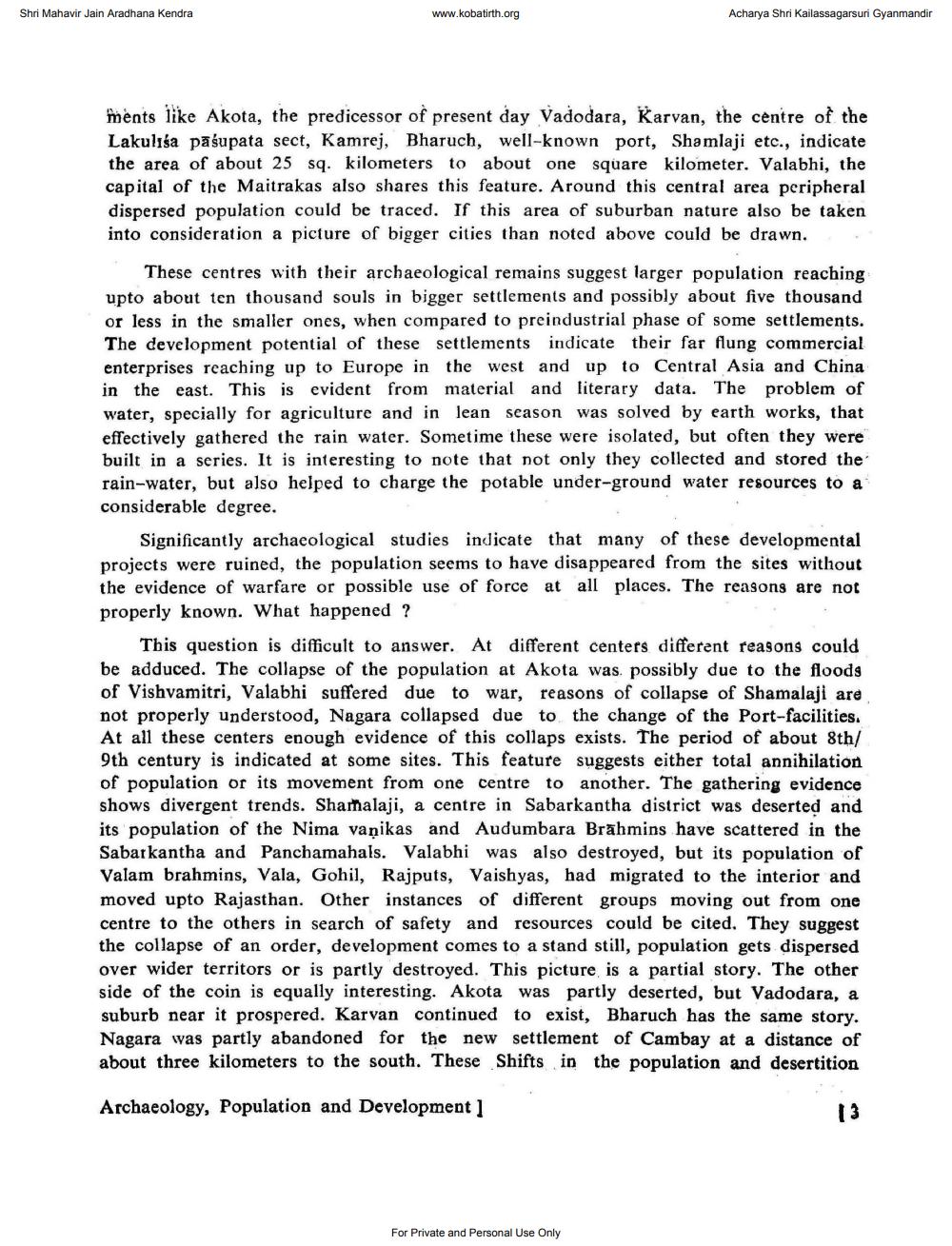Book Title: Samipya 1991 Vol 08 Ank 01 02 Author(s): Pravinchandra C Parikh, Bhartiben Shelat Publisher: Bholabhai Jeshingbhai Adhyayan Sanshodhan Vidyabhavan View full book textPage 5
________________ Shri Mahavir Jain Aradhana Kendra www.kobatirth.org Acharya Shri Kailassagarsuri Gyanmandir ments like Akota, the predicessor of present day Vadodara, Karvan, the centre of the Lakulisa pabupata sect, Kamrej, Bharuch, well-known port, Shamlaji etc., indicate the area of about 25 sq. kilometers to about one square kilometer. Valabhi, the capital of the Maitrakas also shares this feature. Around this central area peripheral dispersed population could be traced. If this area of suburban nature also be taken into consideration a picture of bigger cities than noted above could be drawn. . These centres with their archaeological remains suggest larger population reaching upto about ten thousand souls in bigger settlements and possibly about five thousand or less in the smaller ones, when compared to preindustrial phase of some settlements. The development potential of these settlements indicate their far flung commercial enterprises reaching up to Europe in the west and up to Central Asia and China in the east. This is evident from material and literary data. The problem of water, specially for agriculture and in lean season was solved by earth works, that effectively gathered the rain water. Sometime these were isolated, but often they were built in a series. It is interesting to note that not only they collected and stored the rain-water, but also helped to charge the potable under-ground water resources to a considerable degree. Significantly archaeological studies indicate that many of these developmental projects were ruined, the population seems to have disappeared from the sites without the evidence of warfare or possible use of force at all places. The reasons are not properly known. What happened ? This question is difficult to answer. At different centers different reasons could be adduced. The collapse of the population at Akota was possibly due to the floods of Vishvamitri, Valabhi suffered due to war, reasons of collapse of Shamalaji are not properly understood, Nagara collapsed due to the change of the Port-facilities. At all these centers enough evidence of this collaps exists. The period of about 8th/ 9th century is indicated at some sites. This feature suggests either total annihilation of population or its movement from one centre to another. The gathering evidence shows divergent trends. Shamalaji, a centre in Sabarkantha district was deserted and its population of the Nima vanikas and Audumbara Brahmins have scattered in the Sabarkantha and Panchamahals. Valabhi was also destroyed, but its population of Valam brahmins, Vala, Gohil, Rajputs, Vaishyas, had migrated to the interior and moved upto Rajasthan. Other instances of different groups moving out from one centre to the others in search of safety and resources could be cited. They suggest the collapse of an order, development comes to a stand still, population gets dispersed over wider territors or is partly destroyed. This picture is a partial story. The other side of the coin is equally interesting. Akota was partly deserted, but Vadodara, a suburb near it prospered. Karvan continued to exist, Bharuch has the same story. Nagara was partly abandoned for the new settlement of Cambay at a distance of about three kilometers to the south. These Shifts in the population and desertition Archaeology, Population and Development | 13 For Private and Personal Use OnlyPage Navigation
1 ... 3 4 5 6 7 8 9 10 11 12 13 14 15 16 17 18 19 20 21 22 23 24 25 26 27 28 29 30 31 32 33 34 35 36 37 38 39 40 41 42 43 44 45 46 47 48 49 50 51 52 ... 134
